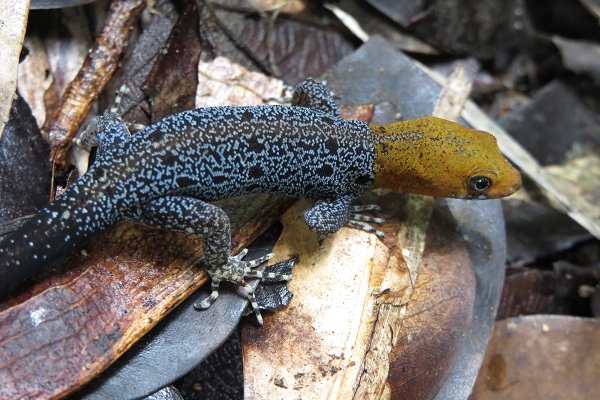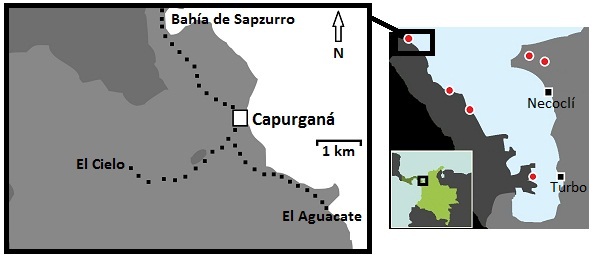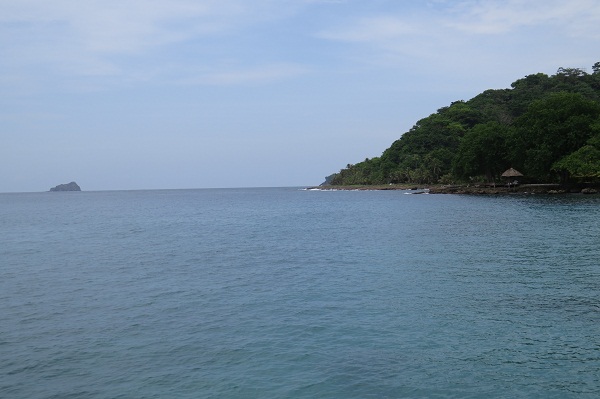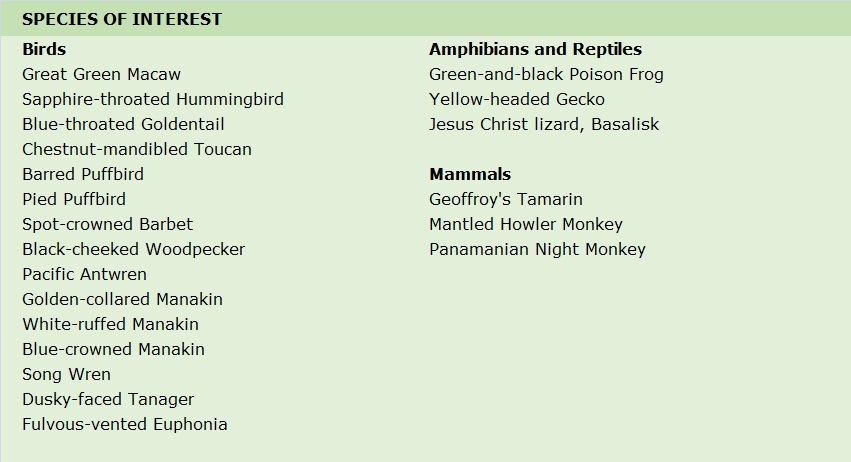Capurganá is situated close to the Panama border on a river plain surrounded by low mountains and the sea. Much of the flat lowlands are cultivated but still hold a high diversity of species. Heading inland towards el Cielo there are remnants of forest with a range of birds from the Chocó – Darién region, including Pacific Antwren, Barred Puffibrd, and Dusky-faced Tanager, as well as plenty of lizards, like the Yellow-headed Gecko. Further inland still, it is possible to find Great Green Macaw and there are even recent reports of Harpy Eagle, but these remote areas require long treks. Closer to Capurganá the trail to Sapzurro is an excellent option for wildlife watching, where it is possible to see 20 different species of hummingbirds, four species of Manakin, three toucans, Geoffroy’s Tamarin and Howler Monkeys. The trail to El Aguacate passes through a range of agroforestry systems, where a range of attractive birds species can be seen, such as tanagers, woodpeckers and the Collared Aracari. The migration of raptors during autumn (late October to mid-November), and less so spring, is outstanding, particularly when thunderstorms form inland. Finally, the Panamanian Night-monkey frequents certain tree cavities close to town and with luck this remarkable animal can be seen at dawn and dusk.

The Torrón de Azúcar, a rocky island close to Capurganá, is inhabited by nesting Brown Booby, an impressive seabird, and a visit can be combined with snorkeling around the base of the island.

Map & general advice
| How to get there: One to two boats to Capurganá leave daily from the Waffe in Turbo, typically between 8 – 9 am (2 hrs 30 mins). An alternative and generally more comfortable route is from Necoclí (Caribe S.A.S. Yadi Marin 322 6202442 – Edward 304 3800939), with boats leaving daily at 8 am and returning from Capurganá at 10 am (1 hr 30 mins).If you are travelling from Turbo, it is recommended to buy tickets the day before travelling or early in the morning (before 7 am) on the day of travel, to guarantee a seat and to avoid being seated in the bow of the boat (it can be particularly uncomfortable when the sea is rough). Finally, ADA (www.ada-aero.com) has flights from Medellin to Acandí, and boats to Capurganá (40 mins) leave Acandí at 1 pm. Sea crossings between January and April can be especially rough, with boats very occasionally flipping, it is therefore advisable to inquire about the state of the sea if you must travel during this period. |
| Where to stay: Capurganá has numerous accommodations to meet all tastes and budgets. The larger hotels can be booked online (ej. www.almar.com.co) or if you would prefer a hostal, try Luz de Oriente (www.luzdeoriente.com), Hostal Capurganá (www.hostalcapurgana.net) or Posada del Gecko (www.posadadelgecko.com). If you want to stay out of town, Luz de Oriente offers accommodation at a farm approximately three hours inland on foot. |
| Local guides: Many individuals and hotels offer guiding. To support the local community, inquire about guides through Marta and Fabio (Cel. 314 6223149, tacarcunas@gmail.com). |
| Trails: The trail towards Sapzurro is an excellent option for encountering a wide range of birds and occasionally mammals, especially early in the morning. The trails to El Cielo and to a lesser degree towards El Aguacate are good for birdwatching. A trip by boat to the Torrón de Azúcar is recommended for the seabird colony on the island and for snorkeling when sea conditions permit. The seabird colony is sensitive to disturbance and is best visited with guides who maintain a prudent distance and do not make noise to disturb the nesting birds. |

